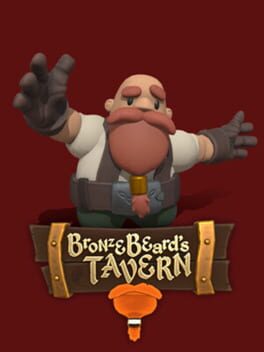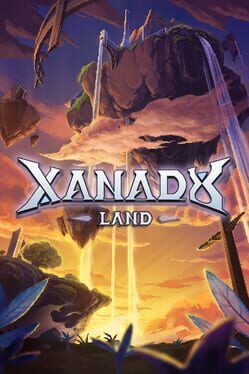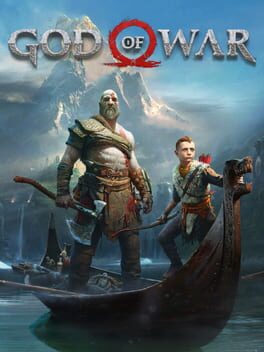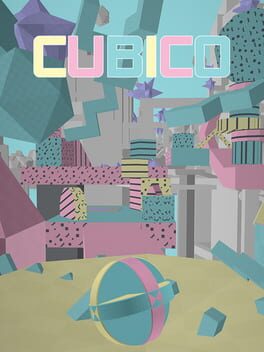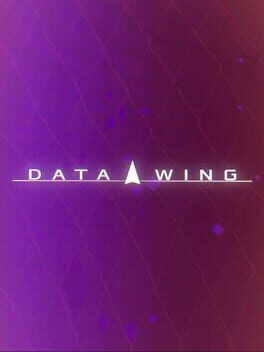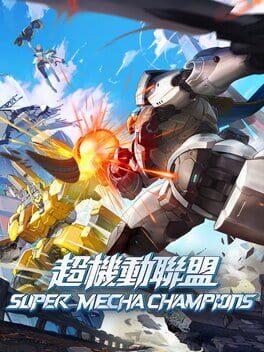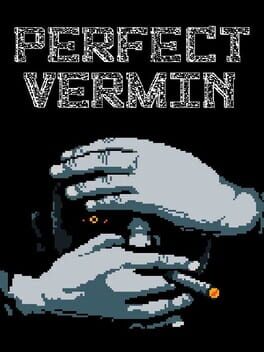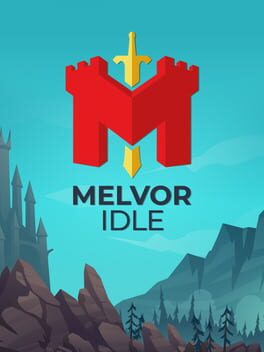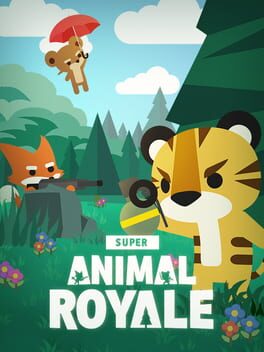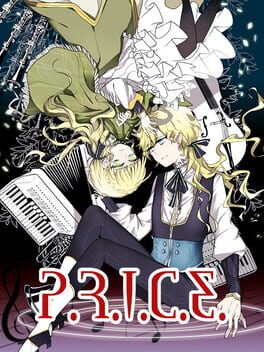Goslopo
BACKER
2023
2024
A pretty bog standard RotMG clone ported from mobile to PC. It's not as egregious as some of the other mobile ports,: they put in the effort to change control prompts, add PC screen resolutions, limited translation, etc. However it's still a mobile game at the end of the day with all of it's extremely large on screen buttons, 30 second music loops, and sludgy movement. I could see the gameplay and combat getting more engaging as the game progresses, but I personally don't have the patience to sit through the lack of polish.
Props to the developers for not making a traditional cash grab mobile game, but unfortunately there's much better options out there on PC, especially for English speaking players.
Props to the developers for not making a traditional cash grab mobile game, but unfortunately there's much better options out there on PC, especially for English speaking players.
2018
God of War is the story of a man and his son on a journey to lay his recently passed wife to rest. It is difficult to convey just how beautiful, powerful, and amazingly crafted this masterpiece of a game is.
Story
God of War, technically the 4th mainline title in the series, takes place long after the ending of God of War 3 and acts as both a continuation of the story and a reimagining of the series. What used to be a non-stop, hate filled, machine of a series has been completely reintroduced as a meticulous, well thought out, journey highlighting the dynamics of the life of a god and the overall growth of a family. As this is a reimagining in the series, the developers have taken the time to briefly cover the information critical to the story, removing any need to play the previous entries prior to this one. What they managed to achieve with this change is nothing short of a miracle, deserving of every single award it has received in the time after its release. There are a couple of times where the tone of the characters felt odd, but these instances were few and far between as well as not terribly impactful. Overall, God of War provides possibly best crafted story in an action game to date and from now on will be all that I think of when I hear the phrase “life is a journey, not a destination”.
Gameplay
The standard cycle of gameplay jumps between fast paced hack and slash sections and slower paced puzzle sections. The combat feels relatively reserved early into the game. However, as you progress, it becomes more and more extreme, adding new weapons, combos, and flashy finishers. It generally feels somewhat difficult, but fair. My only gripe is that there never really feels like there is much punishment for dying. The shorter fights don’t take long to get through or move you very far back when you die, and the longer fights checkpoint you at each major interval. The puzzles are very simple for the most part, there were only a couple of points in the game where I had to stop for a moment and think of a way to get past a section. The developers did manage to get creative with the structures of some of the puzzles given that the tools to use in the game are limited. Spliced between the combat and puzzles, there are cutscene sections and associated quick time events. These sections are beautiful, very well designed, and don’t go overboard on the quick time events like they did in some of the previous entries. Frequently, these are tied directly into major boss fights and don’t interrupt the flow of battle as badly as one may expect from a cutscene/quick time event.
The customization and the progression in the game centers around the three primary weapons and an array of defensive accessories. As the player progresses through God of War, they are presented with equipment, currency, and resources. The equipment is often not as impactful as what you can purchase in the store (in-game currency of course, nothing paid), but is fun to find around anyways. The currency can be used to purchase items, resources, and equipment in the store, upgrade equipment from the store, or to be turned into resources directly. I never felt terribly limited by the amount of currency I was receiving throughout the game as it scales directly with your progression in the game. Finally, the resources can be used along with the currency to upgrade equipment in the shop. The high tier resources are difficult to come by and generally are found from major bosses and the lower tier resources are found frequently from standard enemies.
End game content is satisfying, but tedious at times. With a bulk of the content being collectables or grinding for Mist (an end game resource), the gameplay quickly loses its charm. So, I would personally recommend beating the game, but not necessarily going for the platinum as it’s going to be a slog of looking for collectables. The moment to moment combat in the end game is as satisfying as it is in the early game, so if you just want more combat, feel free to go for the completion or reaching for some of the post-game content.
Art
Every single area in God of War feels detailed, fleshed out, and fun to experience. Although there is an overall feeling of “cold winter” in all the areas, each one feels unique and fun to explore. The skyboxes are well detailed, the character models are all extremely beautiful and don’t feel out of place, and the equipment feels unique and well designed. Many times, I found myself gliding along the lake in the canoe and looking out into the distance at the monstrous figures and mountains just to take in the beauty of the game.
Controls
The controls are nothing special, but there is something to be said about figuring out a way to let a player control two different characters at once relatively fluidly. At times I found myself accidently putting away my weapons, switching weapons, or activating rage mode during battle, but other than those rare moments, things were generally smooth. The controls for Atreus, while difficult to memorize right off the bat, felt very easy to execute in the endgame (albeit a bit button mash-y).
Sound
Overall, the developers knocked the sound design out of the park in God of War. The voice acting is amazing to say the least. The conversations between the characters are engaging, entertaining, and just fun to experience through the entire game. The in-battle banter is smooth and enjoyable. The concept of a different story being told when traversing from one area to the next is amazing and put into practice very well. There isn’t anything about the ambient noise that feels annoying or out of place. While the music isn’t something that I would personally listen to in my free time, I can still recognize its beauty. It fits thematically into the game without a hitch and only ever complements the gameplay. I don’t necessarily have any love for the music, but it’s worth mentioning.
Note: Review originally written in 2019
Story
God of War, technically the 4th mainline title in the series, takes place long after the ending of God of War 3 and acts as both a continuation of the story and a reimagining of the series. What used to be a non-stop, hate filled, machine of a series has been completely reintroduced as a meticulous, well thought out, journey highlighting the dynamics of the life of a god and the overall growth of a family. As this is a reimagining in the series, the developers have taken the time to briefly cover the information critical to the story, removing any need to play the previous entries prior to this one. What they managed to achieve with this change is nothing short of a miracle, deserving of every single award it has received in the time after its release. There are a couple of times where the tone of the characters felt odd, but these instances were few and far between as well as not terribly impactful. Overall, God of War provides possibly best crafted story in an action game to date and from now on will be all that I think of when I hear the phrase “life is a journey, not a destination”.
Gameplay
The standard cycle of gameplay jumps between fast paced hack and slash sections and slower paced puzzle sections. The combat feels relatively reserved early into the game. However, as you progress, it becomes more and more extreme, adding new weapons, combos, and flashy finishers. It generally feels somewhat difficult, but fair. My only gripe is that there never really feels like there is much punishment for dying. The shorter fights don’t take long to get through or move you very far back when you die, and the longer fights checkpoint you at each major interval. The puzzles are very simple for the most part, there were only a couple of points in the game where I had to stop for a moment and think of a way to get past a section. The developers did manage to get creative with the structures of some of the puzzles given that the tools to use in the game are limited. Spliced between the combat and puzzles, there are cutscene sections and associated quick time events. These sections are beautiful, very well designed, and don’t go overboard on the quick time events like they did in some of the previous entries. Frequently, these are tied directly into major boss fights and don’t interrupt the flow of battle as badly as one may expect from a cutscene/quick time event.
The customization and the progression in the game centers around the three primary weapons and an array of defensive accessories. As the player progresses through God of War, they are presented with equipment, currency, and resources. The equipment is often not as impactful as what you can purchase in the store (in-game currency of course, nothing paid), but is fun to find around anyways. The currency can be used to purchase items, resources, and equipment in the store, upgrade equipment from the store, or to be turned into resources directly. I never felt terribly limited by the amount of currency I was receiving throughout the game as it scales directly with your progression in the game. Finally, the resources can be used along with the currency to upgrade equipment in the shop. The high tier resources are difficult to come by and generally are found from major bosses and the lower tier resources are found frequently from standard enemies.
End game content is satisfying, but tedious at times. With a bulk of the content being collectables or grinding for Mist (an end game resource), the gameplay quickly loses its charm. So, I would personally recommend beating the game, but not necessarily going for the platinum as it’s going to be a slog of looking for collectables. The moment to moment combat in the end game is as satisfying as it is in the early game, so if you just want more combat, feel free to go for the completion or reaching for some of the post-game content.
Art
Every single area in God of War feels detailed, fleshed out, and fun to experience. Although there is an overall feeling of “cold winter” in all the areas, each one feels unique and fun to explore. The skyboxes are well detailed, the character models are all extremely beautiful and don’t feel out of place, and the equipment feels unique and well designed. Many times, I found myself gliding along the lake in the canoe and looking out into the distance at the monstrous figures and mountains just to take in the beauty of the game.
Controls
The controls are nothing special, but there is something to be said about figuring out a way to let a player control two different characters at once relatively fluidly. At times I found myself accidently putting away my weapons, switching weapons, or activating rage mode during battle, but other than those rare moments, things were generally smooth. The controls for Atreus, while difficult to memorize right off the bat, felt very easy to execute in the endgame (albeit a bit button mash-y).
Sound
Overall, the developers knocked the sound design out of the park in God of War. The voice acting is amazing to say the least. The conversations between the characters are engaging, entertaining, and just fun to experience through the entire game. The in-battle banter is smooth and enjoyable. The concept of a different story being told when traversing from one area to the next is amazing and put into practice very well. There isn’t anything about the ambient noise that feels annoying or out of place. While the music isn’t something that I would personally listen to in my free time, I can still recognize its beauty. It fits thematically into the game without a hitch and only ever complements the gameplay. I don’t necessarily have any love for the music, but it’s worth mentioning.
Note: Review originally written in 2019
2019
Cubico is a simple, yet robust open world, arcade platformer in the same vein as Super Monkey Ball and Marble Madness where the overall goal is to roll around a set of features as a living ball and reach a given location. The game uses unique and fun mechanics to form a quite memorable experience.
Story
There isn't really a story, but this also isn't really the kind of game that benefits from having a story in the first place. So, pay no mind to this section.
Gameplay
This is where the real meat of Cubico comes in. As stated previously, the goal is to roll around the map and reach a goal, constantly dodging obstacles and solving bite-sized puzzles along the way. The rolling doesn't necessarily feel as weighty as I was initially expecting, due to many of the puzzles requiring constant jumping and precise in-air control. Even with the lack of weight, the movement still felt satisfying, especially after I was able to fully grasp the camera movement and the feel of the physics.
The game features a variety of puzzles that, although relatively short, are still fun to resolve. Many of these puzzles include a gameplay mechanic centered around a sort of "box stretching" for lack of a better term. The player uses the camera and mouse to lock onto a given axis of a shape on the map and stretch out any planes connected directly to that axis. This terrain manipulation leads to a very open-ended form of puzzle solving, which is especially appreciated when many other games of the genre take a "my way or the highway" approach to puzzle solving.
Art
The art in the game is simple, comprised entirely of basic polyhedrons and flat colors. There isn't much to say about the graphical fidelity, but the world design is fun to experience and quite a bit more vast than I initially expected.
Controls
Sticking with the theme of being simple and effective, the controls are comprised of a left click for terrain manipulation, WASD for movement, and Shift for "sprinting". It allows for easy movement across the terrain and never really left me frustrated at any point.
Sound
This is probably the only part of the game that actually made me a bit annoyed at points. The music is very, very short. It also loops. Constantly. It’s not bad, it’s just constantly looping the same section over and over again. Also, when you die, it will restart the current song from the beginning. So basically, the music itself is pretty good, the implementation into the game is very poor.
Note
I should also mention that in other reviews, I was noticing people getting lost at points. Generally, the pathing is very direct, but there are points where the game will require the player to branch or follow a certain path to reach a given goal. I noticed that there will be a small, very detailed shape next to a few of the paths that will consists of many different either gray, or multi-colored layers. These shapes and the area that is colored, indicate the path that you’re following and the goal that you will complete by following the path.
Note: Review originally written in 2019
Story
There isn't really a story, but this also isn't really the kind of game that benefits from having a story in the first place. So, pay no mind to this section.
Gameplay
This is where the real meat of Cubico comes in. As stated previously, the goal is to roll around the map and reach a goal, constantly dodging obstacles and solving bite-sized puzzles along the way. The rolling doesn't necessarily feel as weighty as I was initially expecting, due to many of the puzzles requiring constant jumping and precise in-air control. Even with the lack of weight, the movement still felt satisfying, especially after I was able to fully grasp the camera movement and the feel of the physics.
The game features a variety of puzzles that, although relatively short, are still fun to resolve. Many of these puzzles include a gameplay mechanic centered around a sort of "box stretching" for lack of a better term. The player uses the camera and mouse to lock onto a given axis of a shape on the map and stretch out any planes connected directly to that axis. This terrain manipulation leads to a very open-ended form of puzzle solving, which is especially appreciated when many other games of the genre take a "my way or the highway" approach to puzzle solving.
Art
The art in the game is simple, comprised entirely of basic polyhedrons and flat colors. There isn't much to say about the graphical fidelity, but the world design is fun to experience and quite a bit more vast than I initially expected.
Controls
Sticking with the theme of being simple and effective, the controls are comprised of a left click for terrain manipulation, WASD for movement, and Shift for "sprinting". It allows for easy movement across the terrain and never really left me frustrated at any point.
Sound
This is probably the only part of the game that actually made me a bit annoyed at points. The music is very, very short. It also loops. Constantly. It’s not bad, it’s just constantly looping the same section over and over again. Also, when you die, it will restart the current song from the beginning. So basically, the music itself is pretty good, the implementation into the game is very poor.
Note
I should also mention that in other reviews, I was noticing people getting lost at points. Generally, the pathing is very direct, but there are points where the game will require the player to branch or follow a certain path to reach a given goal. I noticed that there will be a small, very detailed shape next to a few of the paths that will consists of many different either gray, or multi-colored layers. These shapes and the area that is colored, indicate the path that you’re following and the goal that you will complete by following the path.
Note: Review originally written in 2019
2017
Data Wing is a stylish, fun, and relaxing 2D racer that emulates much more than just its initial genre.
Gameplay
Data Wing takes the expected idea of what a 2D racer should be and constantly twists and turns it into whatever genre it thinks it wants to be. That may not be the best explination, but once you begin playing, you’ll know what I’m talking about. The game begins with a very simple idea of accelerating the closer you are to walls and continuously builds upon it as the game progresses. Eventually you’ll feel like you’re bouncing between platformers, adventure games, and time trials. Somehow, Data Wing manages to make all of these different ideas work seamlessly with the rest of the gameplay, making nothing feel out of place.
Story
Surprisingly, Data Wing manages to implement a pretty fun story into a 2D racer. It’s relatively short, so I won’t go into it here, but it helps to move the game along and maintain a consistent pace until the end. The story in Data Wing isn’t extremely impactful and feels a bit cheesy at times, but is delivered in a way that matches the over theme of the game, leaving me overall satisfied with this aspect.
Art
Data Wing aims for a certain asthetic and nails it in every aspect. The art is very simple in terms of characters and obstacles, but changes depending on the context, leaving me always interested in what was coming next. Similar to something along the lines of Superhot, Data Wing provides a small amount of art, extremely well.
Sound
There is no voice acting in Data Wing and the sound affects are standard at best, but the music is outstanding. The soundtrack can be found on Spotify and Apple Music if you’re interested (and you should be interested). Data Wing provides a series of jazzy Synthwave tunes that leave the player feeling relaxed through the entire experience. The only aspect I would want changed would be to have the music change depending on the level. It seems like every song plays in every level, which allows for variety, but lacks in impact.
Controls
I occasionally experienced a bit of latency, but generally it was fine. It’s 2 buttons, you should be able to figure this one out.
Note: Review originally written in 2019
Gameplay
Data Wing takes the expected idea of what a 2D racer should be and constantly twists and turns it into whatever genre it thinks it wants to be. That may not be the best explination, but once you begin playing, you’ll know what I’m talking about. The game begins with a very simple idea of accelerating the closer you are to walls and continuously builds upon it as the game progresses. Eventually you’ll feel like you’re bouncing between platformers, adventure games, and time trials. Somehow, Data Wing manages to make all of these different ideas work seamlessly with the rest of the gameplay, making nothing feel out of place.
Story
Surprisingly, Data Wing manages to implement a pretty fun story into a 2D racer. It’s relatively short, so I won’t go into it here, but it helps to move the game along and maintain a consistent pace until the end. The story in Data Wing isn’t extremely impactful and feels a bit cheesy at times, but is delivered in a way that matches the over theme of the game, leaving me overall satisfied with this aspect.
Art
Data Wing aims for a certain asthetic and nails it in every aspect. The art is very simple in terms of characters and obstacles, but changes depending on the context, leaving me always interested in what was coming next. Similar to something along the lines of Superhot, Data Wing provides a small amount of art, extremely well.
Sound
There is no voice acting in Data Wing and the sound affects are standard at best, but the music is outstanding. The soundtrack can be found on Spotify and Apple Music if you’re interested (and you should be interested). Data Wing provides a series of jazzy Synthwave tunes that leave the player feeling relaxed through the entire experience. The only aspect I would want changed would be to have the music change depending on the level. It seems like every song plays in every level, which allows for variety, but lacks in impact.
Controls
I occasionally experienced a bit of latency, but generally it was fine. It’s 2 buttons, you should be able to figure this one out.
Note: Review originally written in 2019
2016
Rusty Lake: Roots is a simple, yet engaging point and click puzzle game focused on the Vanderboom family and their lives on the shore of Rusty Lake.
Controls
As a point and click adventure, the controls are fairly simple: you point and you click. Other than that, actions feel responsive and interactions with the world don't generally feel like they last too long or move too quickly.
Gameplay
Rusty Lake: Roots focuses on maintaining a simple core mechanic of combining one or two items together to create something new, then using that item in a series of complex puzzles. Due to the vast amount of puzzles available and the relatively short length of the game, the gameplay never really feels like it gets stale at any points.
Sound
Overall, the music wasn't bad, but also wasn't anything amazing. It always fit the tone of the game appropriately and never felt too out of place. There were also a few moments where the music played very nicely into the gameplay and led to quite memorable moments, even if the music itself wasn't very memorable on its own. The voice acting was OK at best, often failing to match the dramatic tone of the game.
Art
The art of the Rusty Lake series continues to astound me from game to game and nothing about that changes in Rusty Lake: Roots. The only part that annoys me personally was the film grain-esque filter applied over all the gameplay. It aims to help to match the overall tone of the game, but ends up feeling like more of a distraction than an actual improvement.
Story
I've always been a fan of providing a story piecemeal to a player rather than in one long series and this game plays very nicely into that strategy. The overall story is relatively short, making it easy to keep straight when the pieces start being revealed. The actual story itself isn't terrible throughout, with an ending that feels fair, albeit a bit lackluster.
Note: Review originally written Feb 8, 2019
Controls
As a point and click adventure, the controls are fairly simple: you point and you click. Other than that, actions feel responsive and interactions with the world don't generally feel like they last too long or move too quickly.
Gameplay
Rusty Lake: Roots focuses on maintaining a simple core mechanic of combining one or two items together to create something new, then using that item in a series of complex puzzles. Due to the vast amount of puzzles available and the relatively short length of the game, the gameplay never really feels like it gets stale at any points.
Sound
Overall, the music wasn't bad, but also wasn't anything amazing. It always fit the tone of the game appropriately and never felt too out of place. There were also a few moments where the music played very nicely into the gameplay and led to quite memorable moments, even if the music itself wasn't very memorable on its own. The voice acting was OK at best, often failing to match the dramatic tone of the game.
Art
The art of the Rusty Lake series continues to astound me from game to game and nothing about that changes in Rusty Lake: Roots. The only part that annoys me personally was the film grain-esque filter applied over all the gameplay. It aims to help to match the overall tone of the game, but ends up feeling like more of a distraction than an actual improvement.
Story
I've always been a fan of providing a story piecemeal to a player rather than in one long series and this game plays very nicely into that strategy. The overall story is relatively short, making it easy to keep straight when the pieces start being revealed. The actual story itself isn't terrible throughout, with an ending that feels fair, albeit a bit lackluster.
Note: Review originally written Feb 8, 2019
2018
Turn It On! is a simple puzzle game that excels in most of its presentation, but falls flat in virtually every other category. At $0.99 or $0.00, it may be worth the 45 minutes required to complete the game, but at $1.99 there are better options available.
Foreword: I was kindly provided the code for this game directly from the developers over Twitter in exchange for a review and feedback.
Story:
There isn't really any story in Turn It On!, nor any sort of driving force to lead the player between the levels. There is a small animation of a spaceship preparing to lift off that doesn't seem to be related to anything in the game, but other than that there's nothing.
Gameplay:
The gameplay is that of a standard blackbox puzzle game where you have to figure out how to activate the specific device you are interacting with. Unfortunately, in Turn It On! all of these puzzles are either way too easy or lead the player to guess for the answer. If the puzzles were more engaging, the game may be worth more the time and money, but as it stands there really is no feeling of accomplishment or satisfaction from finishing any of the puzzles. Overall, the gameplay feels lackluster and boring.
Art:
Turn It On's! art is fairly nice. Nothing particularly stands out, but the puzzles are well modeled and the worlds are inoffensive. The major issue with the game's art style is that there's no story to base the art style off of, leading to a disconnected and inconsistent style. Luckily, the menus are simple and easy to understand.
Controls:
The controls are simple and easy to understand. They seem based off of other examples of manipulating a static object in a 3D environment on a mobile device, and are well replicated. The only issue with the games controls is when there are things to manipulate on the side of the object, where the controls become unreliable.
Sound:
The music in Turn It On! is simple and forgettable. None of it is particularly bad, it just falls flat due to the lack of an overall theme and story to build off of and work with. Luckily, the sound effects are well done and respond nicely to player input.
Note: Review originally written in 2019
Foreword: I was kindly provided the code for this game directly from the developers over Twitter in exchange for a review and feedback.
Story:
There isn't really any story in Turn It On!, nor any sort of driving force to lead the player between the levels. There is a small animation of a spaceship preparing to lift off that doesn't seem to be related to anything in the game, but other than that there's nothing.
Gameplay:
The gameplay is that of a standard blackbox puzzle game where you have to figure out how to activate the specific device you are interacting with. Unfortunately, in Turn It On! all of these puzzles are either way too easy or lead the player to guess for the answer. If the puzzles were more engaging, the game may be worth more the time and money, but as it stands there really is no feeling of accomplishment or satisfaction from finishing any of the puzzles. Overall, the gameplay feels lackluster and boring.
Art:
Turn It On's! art is fairly nice. Nothing particularly stands out, but the puzzles are well modeled and the worlds are inoffensive. The major issue with the game's art style is that there's no story to base the art style off of, leading to a disconnected and inconsistent style. Luckily, the menus are simple and easy to understand.
Controls:
The controls are simple and easy to understand. They seem based off of other examples of manipulating a static object in a 3D environment on a mobile device, and are well replicated. The only issue with the games controls is when there are things to manipulate on the side of the object, where the controls become unreliable.
Sound:
The music in Turn It On! is simple and forgettable. None of it is particularly bad, it just falls flat due to the lack of an overall theme and story to build off of and work with. Luckily, the sound effects are well done and respond nicely to player input.
Note: Review originally written in 2019
2020
2021
2018
Overall, it's fine for a free game, but with significantly better alternatives available there's not much of a reason to put time into this one.
Unreliable servers
Poorly conveyed mechanics
Not much but the main mode
Little to no beginner introduction
Frequent teaming in solo game modes
Seemingly rips off the Animal Super Squad namespace/aesthetic to benefit SEO?
Unreliable servers
Poorly conveyed mechanics
Not much but the main mode
Little to no beginner introduction
Frequent teaming in solo game modes
Seemingly rips off the Animal Super Squad namespace/aesthetic to benefit SEO?
2016
